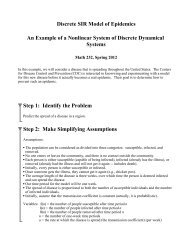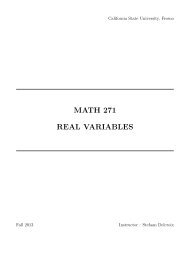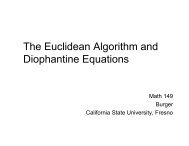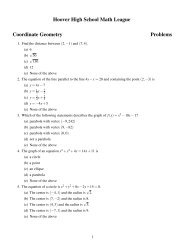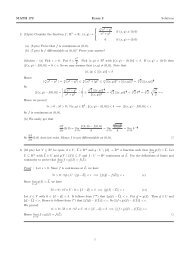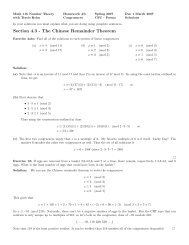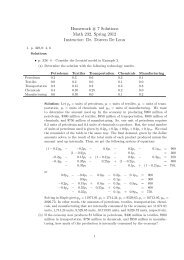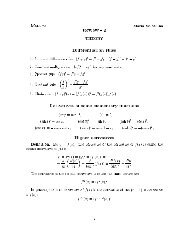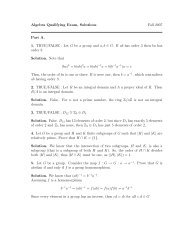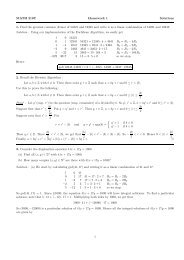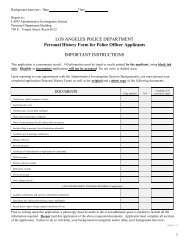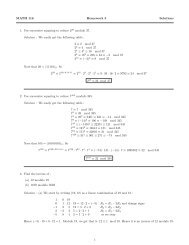The Math of Sudoku
The Math of Sudoku
The Math of Sudoku
- No tags were found...
Create successful ePaper yourself
Turn your PDF publications into a flip-book with our unique Google optimized e-Paper software.
More theorems<strong>The</strong>orem (Herzberg & Ram Murty)Let G be a graph with chromatic number C(G) and P be a partial coloring<strong>of</strong> G using only C(G) − 2 colors. If P can be completed to a total propercoloring <strong>of</strong> G, then there are at least two ways <strong>of</strong> extending the coloring.CorollaryLet n be distinct numbers in a given <strong>Sudoku</strong> puzzle. If n ≤ 7 then thesolution <strong>of</strong> the given <strong>Sudoku</strong> puzzle is not unique.In a related note: the following theorem is due to Sander 5<strong>The</strong>orem<strong>The</strong> eigenvalues <strong>of</strong> the adjacency matrix <strong>of</strong> the <strong>Sudoku</strong> graph are integers.5 <strong>Sudoku</strong> graphs are integral. <strong>The</strong> electronic journal <strong>of</strong> combinatorics 16(2009), #N25



